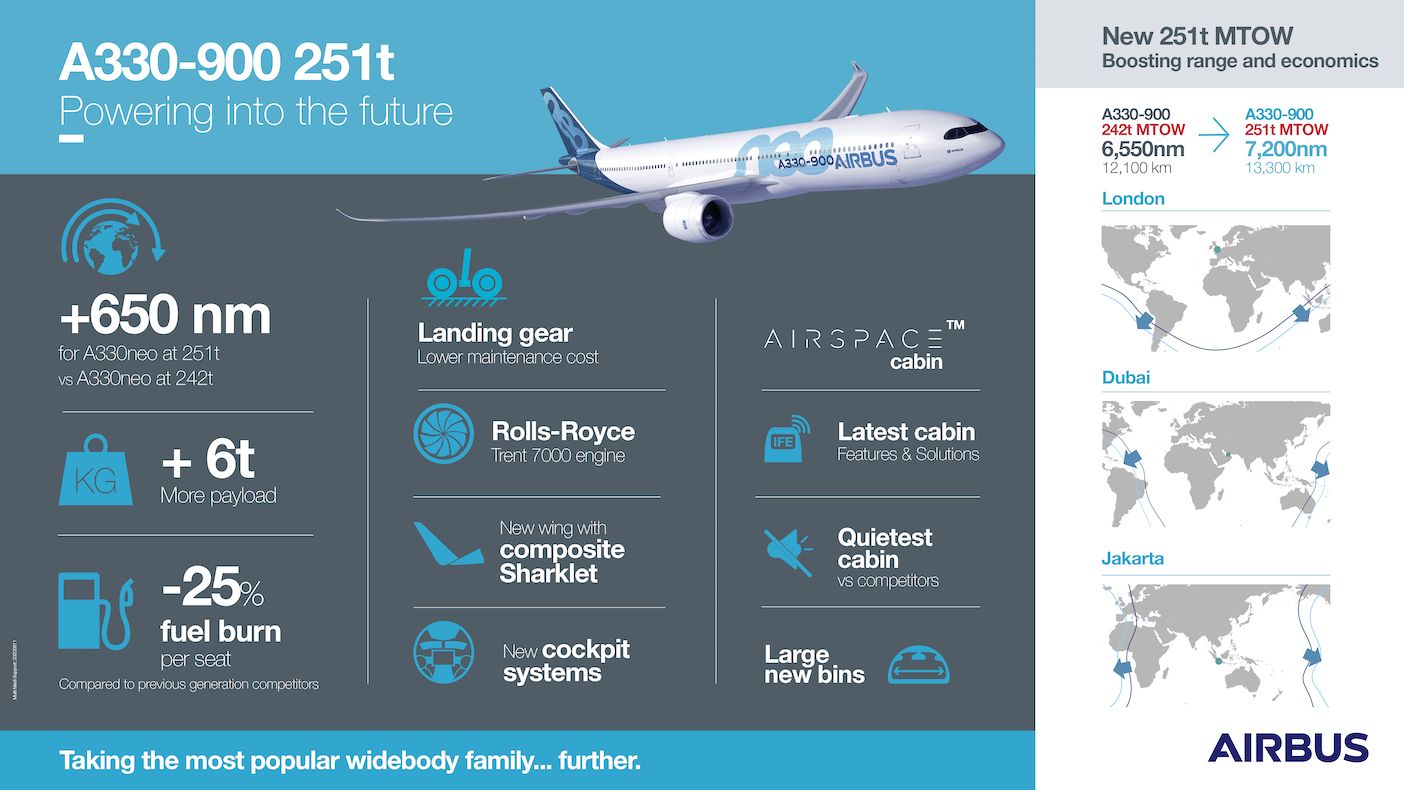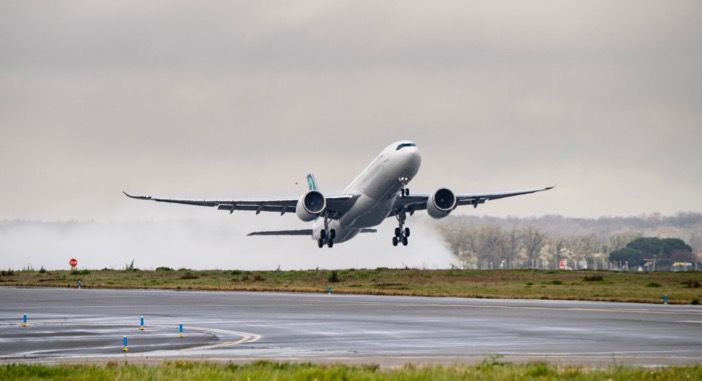Airbus is flight testing a heavyweight version of the A330neo in Toulouse over the coming months, with a planned entry-into-service for the aircraft by the middle of this year.
The new version of the A330-900 has a 251 tonnes maximum take-off weight (MTOW) compared to the 242 tonnes MTOW of the original version, which was certified in December 2018.
The extra 9 tonnes enables the aircraft to travel an extra 650 nautical miles, significantly increasing the number of city pairs it can join. This could include for example. London to South America or into South Asia or Dubai to all destinations in Australia.
Maria-Luisa Lucas-Ugena, head of widebody marketing said. “First we bought excellent efficiency with the neo for the A330 family and now with the extra weight capacity we are bringing a phenomenal range capability.
“The extra range to 7200 nautical miles is very significant and gives the A330neo the capability to open new routes. It is becoming a true trans-Pacific airplane.”

Mini campaign
The 251 tonnes variant made its maiden flight on February 28 from Toulouse and will now undergo a short 30 to 40-hour flight test campaign before it is certified. The aircraft is expected to enter service by July this year.
Jean Phillipe-Cottet, head of development flight tests said, “The first flight was a normal flight, the same as we do with all of our aircraft. We checked all the systems during the flight to ensure we can perform a proper development campaign in the coming weeks.”
“This is not really a new aircraft. We did a lot of the testing during the -900 campaign at the higher weight. We had special authorization for the landing, climb performance, noise testing to cover the extension.
“This testing has reduced the flight test campaign for the 251 tonne version. We want to check the flexibility effect with the weight, some handling qualities and some high-altitude testing. We will be performing stalls, high angle of attack flights at high altitudes and some testing on handling qualities.
“We expect a lot of similarity in terms of performance. We have only one flight planned for the certification of the aircraft – it’s not a major certification flight test program.”
Reinforcements
The extra weight capacity has been enabled by structural reinforcements made to the wings and fuselage and upgrades to the landing gear, including to the tires, brakes and wheels, which have increased the maintenance interval for the landing gear from 10 to 12 years.
Lucas-Ugena said, “The reinforcements were made without increasing the overall weight by achieving weight savings through optimization of the aircraft in other places. These changes don’t have any impact on its operations.”
According to Airbus the 251t variant retains 99% commonality in terms of parts and components with the other A330neos.
A330-800 variant
A heavyweight version of the A330-800 is planned to enter into service next year. The -800, which achieved EASA and FAA certification last month, is 5m (16ft) shorter than the -900 with a lower seat capacity – 406 compared to 460.
The structural and landing gear modifications will significantly extend the range of the aircraft from its existing range of 8150 nautical miles. The flight testing of the heavyweight version of the -800 is expected to take around the same length of time and be conducted between February and July in 2021.





